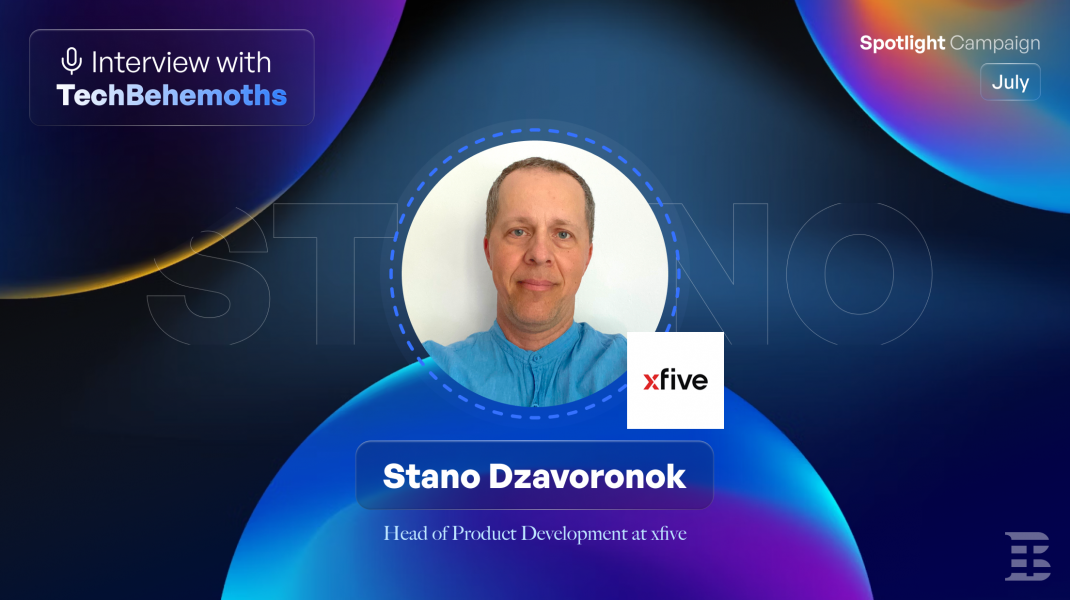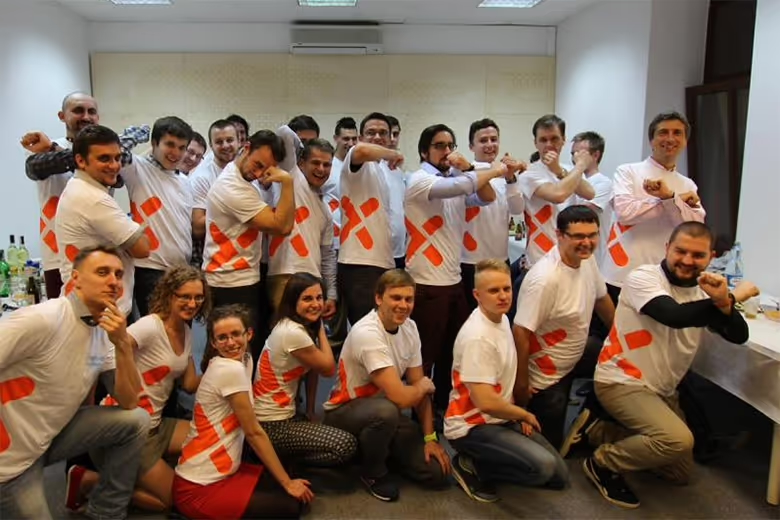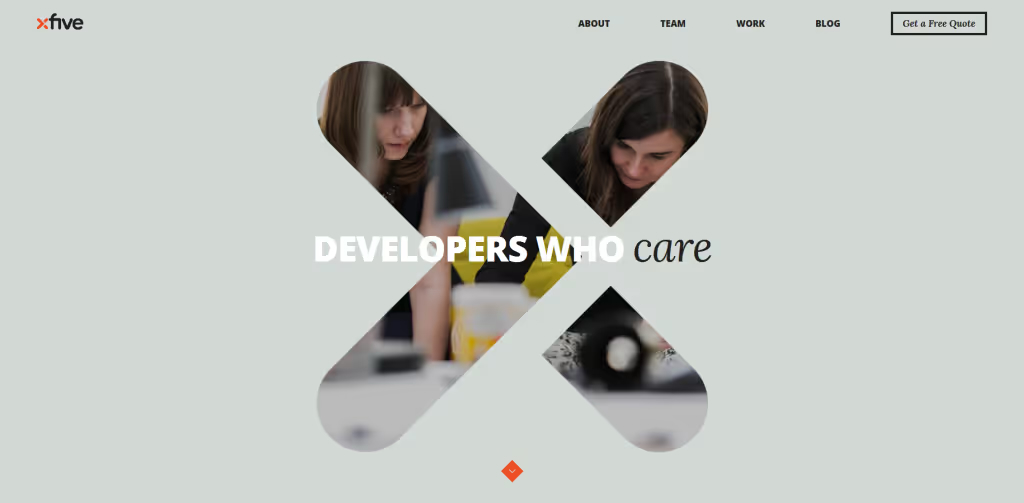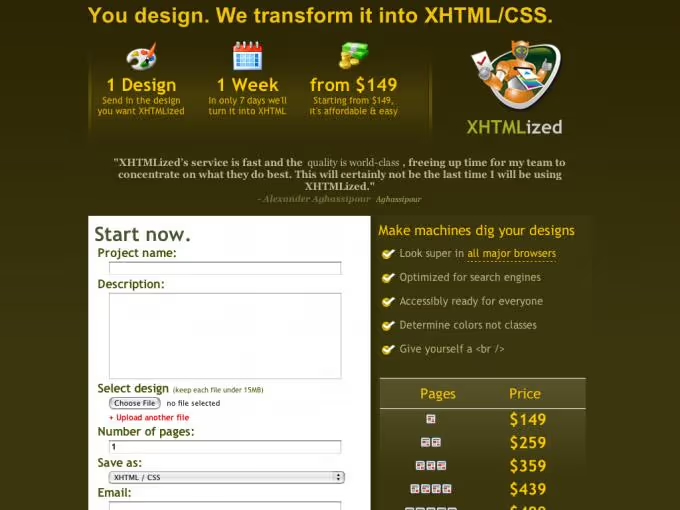Inside xfive: A Conversation with Stano Dzavoronok, Head of Product Development

Summary
In this interview, Stano Dzavoronok shares the story of how he went from freelancing on Elance to helping build xfive into a trusted digital partner for global brands like Twitter, FOX, and UC Berkeley.
He talks about the early days of XHTMLized, the challenges of front-end development in the 2000s, and how Xfive grew into a company that doesn’t just build websites—but solves real business problems through strategy, design, and tech.
Stano also opens up about life outside of work—his love for music, mountain biking, and cooking—and shares some powerful book recommendations that shaped his thinking.
For those starting in tech, his advice is clear: take your time to learn, focus on the “why,” and don’t forget the power of clear communication.
It’s a down-to-earth, inspiring look into two decades of growth, learning, and building with purpose.
Welcome to this exclusive interview with Stano Dzavoronok, Head of Product Development at xfive.
Thank you, Stano, for accepting our invitation.
Welcome to TechBehemoths, Stano! To set the mood, could you please introduce yourself, like your childhood, education, and how you've developed professionally?
I recently turned 50. I was born behind the Iron Curtain in Košice, then part of Czechoslovakia, now Slovakia. Until the age of nine, I lived a typical East Bloc childhood (let’s skip the details for now). At nine, I started playing ice hockey as a goalie, a role I held until I was 19.
My first experience with computers during university was far from smooth. I didn’t like them at all at first. But over time, they grew on me. In 1994, I had my first encounter with the internet via Internet Explorer. It wasn’t until 1999 that I began using the internet for anything meaningful. Although in 1997, I managed to track down relatives in the U.S., and by the end of that year, I traveled to visit them.
During my civil service in 1998–1999, I created my first website using Adobe Image Styler. It generated code, though nothing ready for professional use. I wrote my first commercial-grade code in 2001 for a real client. At the time, I was freelancing on Elance, an early online marketplace where I found not only projects but also long-term clients and collaborators.
Can you share the story behind the creation of xfive and how it evolved from XHTMLized?
The story of xfive (always lowercase) begins with XHTMLized, they’re inseparable. It dates back to November 2004 and is connected to Elance, where I was actively bidding on projects. That’s where I met Dave Rosen, an Australian entrepreneur looking for a development partner.
Dave’s project at the time was called Flywire - an Australian counterpart to Elance. I helped improve its design and functionality, but it didn’t gain much traction. So we pivoted and began exploring our next move.
We decided to launch a service that would help clients turn their designs into websites. The original concept leaned toward automation, we even had a robot in our logo. But the work was entirely handcrafted. Even years after rebranding to xfive, some people still assumed it was an automated service.
XHTMLized soft-launched in late 2005, with an official debut in March 2006. Early on, projects were scarce until a turning point came with Dave’s TechCrunch interview in June. From July 2006 through December 2008, we averaged 45 projects a month. They weren’t big projects, but managing that volume was intense. We were just two people handling QA, client communication, feedback, and invoicing.

That pace led us to bring on freelancers and grow our PM team. I even ended up in a Schantz cervical collar - hours at the screen took their toll. Fun fact: We were fully remote long before remote work became mainstream during the COVID pandemic.
By the end of 2012, XHTMLized formally split into three distinct entities: X-Team, XWP, and XHTMLized. The goal was to bring clarity and improve operations, but the change was also driven by a decline in project volume and rising costs. We were seriously considering whether to keep XHTMLized going at all.
In 2013, things turned around. We gradually evolved from a PSD-to-code service into a more complete offering, including custom web app development, maintenance services, and dedicated team rentals. That marked our early shift toward becoming a software house.
At the end of 2014, we opened our Kraków office, which helped solidify our new direction, but we were still navigating increasing competition.

The name XHTMLized had become a liability - it referenced outdated tech and was tricky to pronounce in many languages. Meanwhile, HTML5 and CSS3 were taking over. So, we made the call: by the end of 2015, we would rebrand as xfive, with our new website going live in 2016.

We shifted our focus toward long-term partnerships and expanded our offering, adding services like custom web design. In 2016, a lot changed. We acquired the U.S.-based company Webvanta, whose founder was in the terminal stage of illness. It was more than a business move—we helped his family secure their future while creating a U.S. footprint for xfive. Through Webvanta, we gained access to several strategic collaborations.
Organizations like UC Berkeley and The Nature Conservancy are among the partners we continue to work with today. These collaborations gave us a new perspective and helped us define a clearer ICP. We began narrowing our industry focus, moving from serving everyone to specializing in sectors like education, healthcare, and NGOs.
One outcome of that work was Press+, a CMS built on WordPress to serve UC Berkeley’s departmental websites.
Like many companies, xfive was impacted by the COVID era, but unlike many, we had been remote-first from the beginning. That meant we adapted quickly. In fact, our team embraced it. Many became more productive and appreciated the flexibility.
That period opened up unexpected opportunities for us. We grew, not just in financial terms, but in service maturity and accumulated experience. Ironically, while many companies were closing their doors, 2022–2023 turned out to be some of our strongest years.
Now, we are making the most of 20 years in the market, thousands of clients, thousands of projects – we’re evolving from a delivery-focused digital agency into a strategic consultancy that supports clients in growing their businesses online.
How does xfive differentiate itself in the competitive landscape of web development and digital solutions?
We close the gap between business strategy and digital execution. Many teams can code. Few can align product development with real business outcomes. That’s where we operate, at the intersection of thinking and doing. We’re not just developers or designers; we’re strategic advisors who build.
Every partnership starts with a strategic audit. We ask the tough questions early to uncover risks, validate opportunities, and tailor the solution for performance, scale, and outcomes. It’s never about throwing tech at a problem. It’s about solving the right problem the right way.
From day one, we align strategy with execution. That typically starts with an audit, so we can make sure what we’re building actually moves the needle for the business.
What sets us apart is our ability to bridge the gap between ideas and execution. We combine full-stack engineering, product design, AI, and strategic consulting into a seamless process. Our clients don’t just get a team that can build - they get a partner who’s thinking long-term, across every layer of the product.
We don’t see ourselves as vendors. We build partnerships based on trust, clarity, and shared goals. We ask the right questions early, communicate proactively, and stay accountable from start to finish.
With over 20 years of experience behind us, we’ve helped teams scale innovative, resilient platforms. However, we don’t rest on our laurels. We remain selective, outcome-driven, and focused on delivering lasting value. That’s how we help turn digital products into a competitive edge.
Could you walk us through some of xfive’s most impactful projects or collaborations?
Some of the most defining partnerships in our history include Twitter, FOX, Rogers Media, UC Berkeley, OECD, and Olera. Each came at a different moment and each marked a turning point in xfive’s evolution.
Twitter (2006) – Our first major startup collaboration. They were looking for a reliable front-end development partner, and our energy and expertise made for a strong match during their early growth phase.
We contributed to the first two versions of Twitter’s UI and transactional emails between 2006 and 2007. At the time, we didn’t know it would become a global platform, but our gut instinct told us it was going somewhere.
We reconnected in 2010 and 2012, once Twitter had scaled into a social media giant, and supported new iterations of their transactional emails.
Biz Stone left us a now-famous testimonial: “These guys are from the future.”
FOX (2008–2009) – Our first collaboration with a major media enterprise. We handled front-end development for several of their show websites, including Bones, The Simpsons, Family Guy, American Idol, and more. We also supported deployments and later, through X-Team, worked on infrastructure refactoring.
X-Team was initially formed within XHTMLized to focus exclusively on enterprise-level work.
Working with FOX required adapting to their internal workflows and standards to deliver reliably across their media portfolio. After the 2012 company split, X-Team continued the relationship independently, retaining key developers to support FOX’s platform performance.
Their feedback? Simple but telling: “Our number one partner.”
Rogers Media (2009–2011) – A leading Canadian media company. We built a new CMS architecture and infrastructure to streamline the management of their extensive network of websites.
Our team, later known as XWP, led development, managed deployment, and reported progress throughout the engagement. By 2013, like X-Team, XWP launched as an independent company, specializing in enterprise-grade WordPress publishing solutions.
UC Berkeley (2016 – present) – Our first long-term collaboration with a major academic institution. This partnership allowed us to combine design and custom development into a dedicated product offering.
Beyond development and support services, we created a custom CMS tailored to academic needs, designed to manage departmental websites at scale.
Named Press+, it was deployed across eight departments at UC Berkeley. Later, the university shifted toward a centralized solution—Open Berkeley—which halted further rollout.
Since recent WordPress updates (block editor, FSE), most of the challenges Press+ addressed are now natively solved, so we’ve sunsetted further development.
We received several testimonials from UC Berkeley departments recognizing our responsiveness and professionalism.
“I’ve been most impressed with xfive.Co’s professionalism and responsiveness.” – Sandra Richmond
“They seemed to know what the site needed before I could articulate it.” – Marissa Dominguez.
OECD (2021 – present) – Approached us via Clutch, looking for a Ruby on Rails partner capable of delivering high-quality engineering work.
Our initial work focused on their internal member administration system. That success led to a larger AI-related engagement where we now deliver UX/UI design, development, PM, QA, and performance optimization.
Client testimonial – Jamie Beryhill: “They provided new ideas to enhance the product in ways that we had not thought of before.”
Olera (2022 – present) – A client where xfive became integral to the business. Olera approached us to develop an MVP for a new platform supporting care services for individuals with dementia, Alzheimer’s, and Parkinson’s.
We were involved from the early scoping stages and played a key role in shaping the platform. Following the launch, we’ve continued to support product improvements and backlog execution.
The launch was a success. It helped secure $2.3 million in funding to scale the platform and expand its reach.
We’re still engaged, enhancing the platform and executing against a growing backlog.
Client feedback: “They go above and beyond in terms of their deliverables. They don’t just do what we tell them; they cross their t’s, dot their i’s, and sometimes do extra work beyond our requirements.”
Based on your experience, how has front-end development evolved since you started in the late '90s?
Back then, front-end development meant slicing images and coding in clunky table layouts. Most web authoring tools defaulted to tables, which, in hindsight, was absurd.
I remember websites so overloaded with images they took minutes to load, especially over a 14.4 kbps modem. A true browser inferno.
Mobile devices weren’t advanced yet, so websites were primarily built for desktops or laptops. Occasionally, you’d see a WAP site built for early mobile phones.
Most websites didn’t follow any standards, HTML, CSS, or accessibility.
In the early 2000s, a wave of web standards evangelists began promoting proper semantic coding practices to replace table-based layouts.
Of course, that shift brought new challenges, like inconsistent CSS rendering across browsers like IE6, IE7, IE8, and IE9. I’m sure many veteran developers still flinch at those names.
Today, the browser is a complete platform. Accessibility, performance, and responsive design aren’t optional - they’re must-haves that often determine whether a product succeeds or fails. Expectations are faster, too. If your product doesn’t load or respond quickly, users will move on to a competitor. We’ve shifted from static markup to dynamic, component-driven systems. Mobile has become the primary way users interact with digital products, one of the biggest shifts since the early web.
Front-end isn’t the final step anymore. It’s a strategic layer that defines how the product performs, scales, and connects with users.
What are the key challenges you see in delivering web solutions today?
The biggest challenge? Bridging the gap between what businesses think they need and what actually delivers value. There’s often a disconnect between vision and execution. Add rising complexity, more frameworks, more tools, tighter budgets—and it’s easy to lose focus.
Our role is to simplify that complexity. To guide our partners. To help them see not just what’s possible, but what’s practical and sustainable.
If you could advise someone just starting in web development or project management, what would it be?
Do it, become excellent at it, and join us ;)
But seriously - don’t rush the learning. Understand the “why” behind the “how.” Tools will change. Foundations won’t. And most importantly: communicate.
Your ability to explain a problem often matters more than your ability to solve it alone. Project management is about working with people. If you’re someone who connects well with others, is friendly, sociable, and has a sense of humor, you’re already halfway there. You’ll also need a solid understanding of the industry, of course.
Where do you see yourself and xfive in the next 5-10 years? Are there any upcoming projects or initiatives you’re excited about?
I’d rather flip this question: where don’t I see myself? Hopefully not in trenches or behind a drone control. We’re living in strange times, some parts of the world are thinking about the next decade, while others seem stuck dragging us back to the 1940s.
I see myself still close to xfive, or involved in one of our successful projects or products. We have several internal initiatives in the pipeline, and I believe some of them have real potential.
When you’re not working on innovative web projects, how do you like to spend your free time?
I’m a hobby musician. I play guitar, bass, sing, and write my songs. I’ve uploaded a collection to SoundCloud. I also enjoy mountain biking, especially on weekends or during holidays. The terrain around my city is perfect for it. I love good food - both eating and cooking it. Our family usually picks travel destinations based on the quality of the local cuisine :)
Are there any books, podcasts, or mentors that have significantly shaped your mindset or career?
I’ve read Yuval Harari’s books: Sapiens, Homo Deus, and 21 Lessons for the 21st Century. They’re eye-opening, mind-shaping works that offer real insight into the human species. I highly recommend them.
I’m drawn to factual and historical literature. Timothy Snyder’s works are a standout: Bloodlands, Black Earth, and The Road to Unfreedom, offering a deep look into the darker chapters of 20th-century European history and their modern implications.
If you had the opportunity to go back in time, what advice would you give to Stano Dzavoronok from 2005/6?
Don’t be afraid to invest in external opportunities or internal ones. Change faster. Rebrand earlier. Say ’no’ more often. And trust that clarity, about who you are and who you’re for, it’s worth more than any quick win.
Xfive is one of the leading companies on TechBehemoths. If you like this interview and think that Stano and his team can help your business, don't hesitate to contact them via TechBehemoths or discover the agency on social media: LinkedIn.
